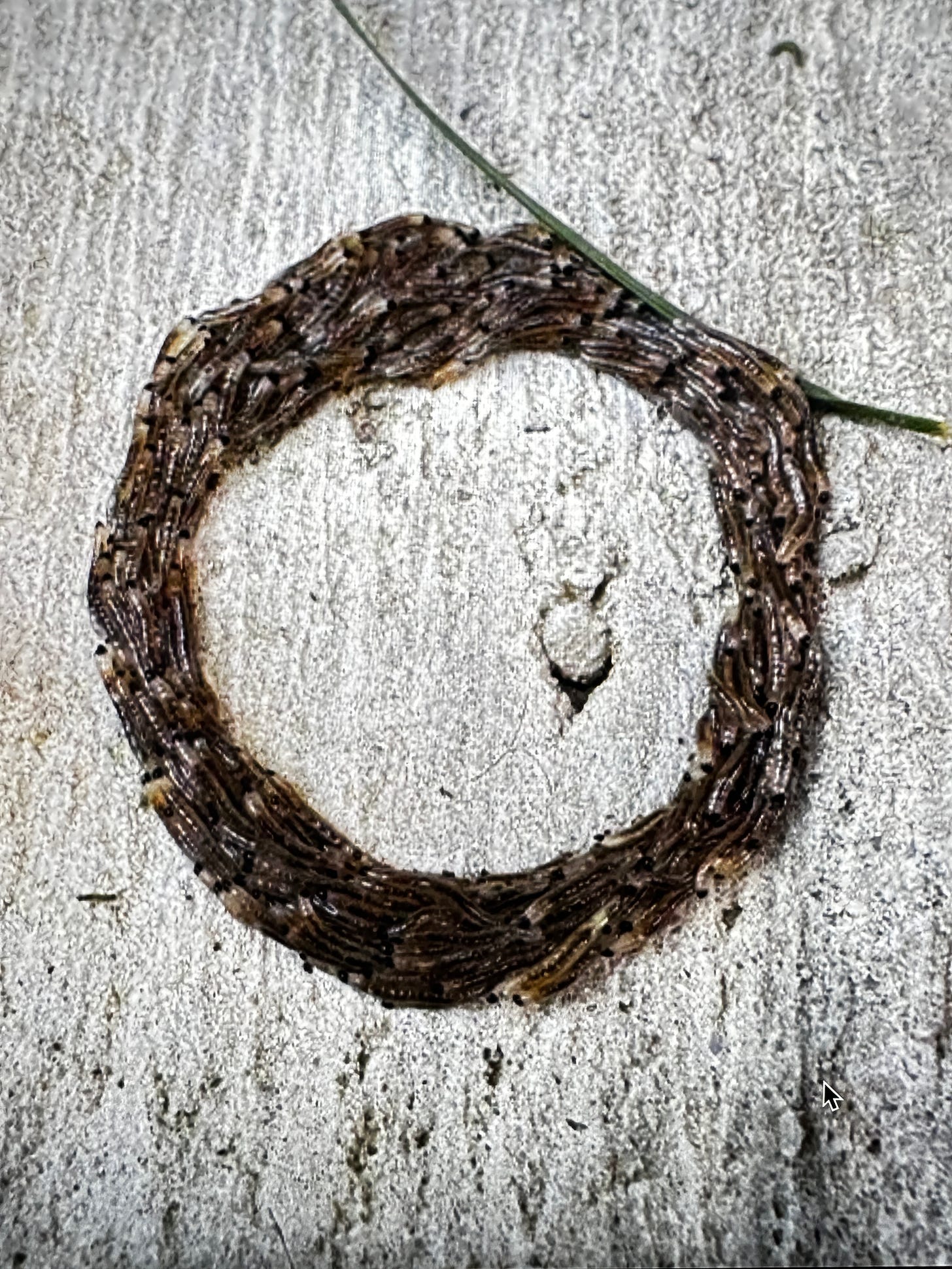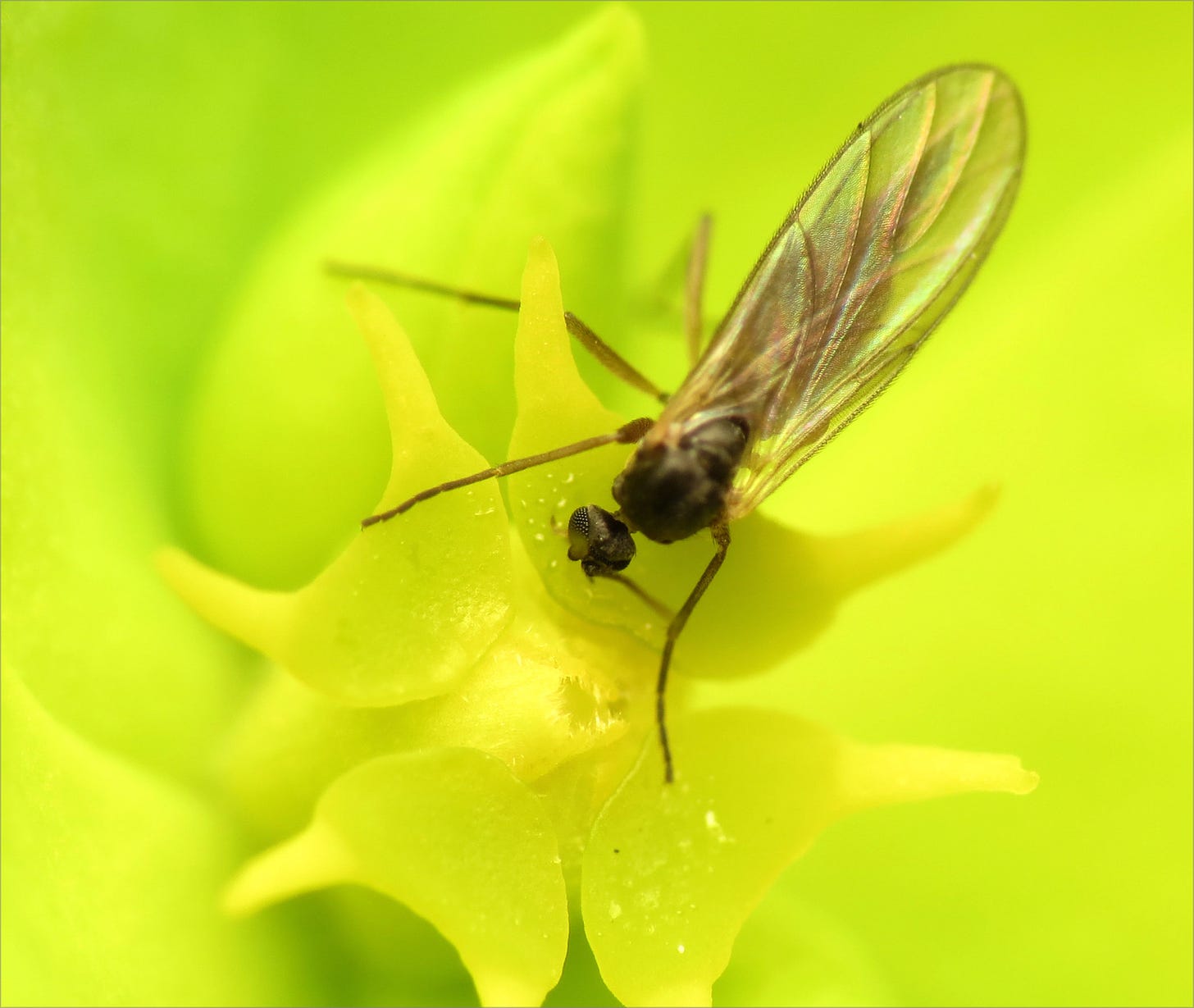I get “nature puzzlers” often from my kids, and from our friends that know I’d be interested in their sidewalk and roadside discoveries from any of the major kingdoms of creatures.
A friend from NY state sent me this photograph recently. hoping I’d have the answer. I didn’t.

I was stumped.
I posted the image to the SEEK app. iNaturalist supports the nature ID tool, so it is generally a reliable source of identification.
It identified this as a colubrid snake. That didn’t seem quite right.
Several hundred insect larvae of an unknown species appear to be marching en mass, maybe crawling over their neighbors to get a little closer to the head of the line.
But they are going nowhere. Surely this aberration offered an opportunity for nature to act, and remove this mass of defective-behavior genes from the gene pool, since these individuals would eventually expire of exhaustion and dehydration.
But wait. Could it be an omen? Does this evolutionary dead end portend cataclysmic events to come? Will other creatures begin to show this evolutionarily-doomed behavior: Following the guy ahead, no matter where he goes—are they Democrats or Republicans? I hadn’t a clue.
IN SEARCHING FOR: “Insect Larvae moving together”
Now we’re getting somewhere!
See Pine processionary – Wikipedia
This is interesting, but not the answer I am after.
The slimy larvae in my friend’s photo are obviously NOT caterpillars (that would grow up to become butterflies or moths.) And pine caterpillars typically follow the leader in a single line, not a rolling swarm. But we’ll get back to that momentarily.
The “follow the leader” behavior of moving immature insects has been known for millennia.
The French entomologist Jean-Henri Fabre conducted a famous[4] study on the pine processionary caterpillar where a group of them followed head-to-tail in a circle around the rim of a flower pot; they continued marching in the circle for a week. He described the experiment in his 1916 book The Life of the Caterpillar.[5] The study has been cited innumerable times by inspirational and religious speakers who view it as a metaphor for blindly following a leader or for confusing activity with accomplishment.
But this circular swarm in the image up top was not a mass of Lepidopterans. And they were NOT proceeding anywhere. The circular death march is a behavioral screw-up, certainly.
But in everyday life, in which the properly-lead swarm presumably travels in a line, they must be going somewhere, with an intention of some sort. But why this method of movement?
The Genius of the Rolling Swarm
Think Rolling Walkway. You know. The one at your friendly local airport, by which you get to terminal Z23 faster (if, unfortunately, not on time for the departure) while you are walking at your speed as the walkway under your feet is also moving.
In the video, pay special attention to the synchronized periodic FREEZES when all marching insects briefly stop. For what? What is that about?
And how does the swarm maintain cohesiveness so it maintains the proper levels for this “go to the front of the line” method to work for the good of the swarm?
You really must watch. Start at 1:25 to go straight to the rolling swarm. But see it all to understand why this is pretty darned remarkable.
The Last Word
- The circular object in my friend’s photo is not a snake.
- The creatures in the circuitous procession are not worms, and they are not caterpillars that are going to become moths or butterflies.
- They are the larvae of the FUNGUS GNAT and apparently they can become quite the pest.
WAIT! I am having the AHA! just now that THIS is the gnat that used to swarm in such dense clouds in the fall that a thick layer of them stuck to the wet metal roof on Goose Creek overnight, and then half filled the gutters when the rain washed them off. Not a good memory, folks.
My work is done here. Please send me the next STUMP THE CHUMP challenge. Bring it on!

 – Fred First is an author, naturalist, photographer watching Nature under siege since the first Earth Day. Cautiously hopeful. Writing to think it through. Thanks for joining me. Subscribe to My Substack HERE
– Fred First is an author, naturalist, photographer watching Nature under siege since the first Earth Day. Cautiously hopeful. Writing to think it through. Thanks for joining me. Subscribe to My Substack HERE
